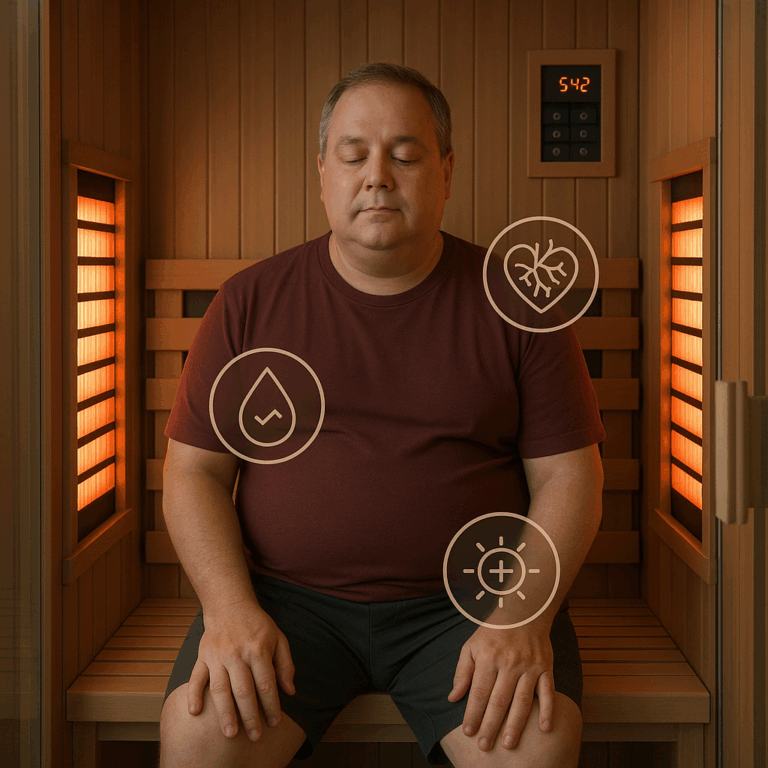
Athletes continuously seek ways to optimize recovery, enhance endurance, and improve overall performance. One of the most effective yet often overlooked methods is sauna therapy. Research shows that sauna use can accelerate muscle repair, improve cardiovascular function, and promote heat adaptation for endurance athletes. This article explores the scientific mechanisms behind sauna therapy and why athletes swear by it.
How Sauna Therapy Enhances Athletic Recovery
1. Improves Circulation and Oxygenation
Heat exposure from a sauna induces vasodilation, leading to:
- Increased blood flow and oxygen delivery to muscles.
- Faster removal of metabolic waste like lactic acid, reducing soreness.
- Enhanced mitochondrial efficiency, improving energy production.
2. Reduces Muscle Soreness and Speeds Up Healing
Sauna sessions help alleviate Delayed Onset Muscle Soreness (DOMS) by:
- Reducing inflammation through heat-induced anti-inflammatory cytokines.
- Activating heat shock proteins (HSPs) that assist in cellular repair.
- Stimulating collagen production, essential for tissue healing.
3. Detoxification and Inflammatory Control
Heavy training loads increase oxidative stress and toxin accumulation. Sauna-induced sweating helps eliminate:
- Heavy metals (lead, mercury, arsenic).
- Metabolic waste products that contribute to inflammation.
- Environmental toxins affecting muscle function and recovery.
The Role of Sauna in Performance Enhancement
1. Heat Adaptation for Endurance Athletes
Sauna therapy mimics the effects of altitude training, promoting physiological adaptations that enhance endurance. Studies show that regular sauna use:
- Increases plasma volume, improving cardiovascular efficiency.
- Boosts red blood cell count, enhancing oxygen-carrying capacity.
- Enhances thermoregulation, delaying the onset of heat exhaustion during intense exercise.
2. Increased Growth Hormone Production
Post-exercise sauna sessions can elevate growth hormone levels by up to 500%, leading to:
- Enhanced muscle repair and hypertrophy.
- Increased fat metabolism.
- Faster recovery from strenuous training sessions.
3. Improved Mental Resilience and Stress Reduction
- Heat exposure triggers the release of endorphins and serotonin, reducing stress and promoting mental clarity.
- Sauna therapy helps lower cortisol levels, preventing overtraining syndrome and fatigue.
Traditional vs. Infrared Saunas for Athletes
Traditional Saunas (Finnish Saunas)
- Temperature: 70-100°C (158-212°F).
- Benefits: Enhanced circulation, deep sweating, and cardiovascular conditioning.
Infrared Saunas
- Temperature: 45-65°C (113-149°F).
- Benefits: Deeper muscle penetration, reduced inflammation, and cellular repair.
Best Practices for Athletes Using Sauna Therapy
Pre-Workout Sauna Use
- Duration: 10-15 minutes.
- Benefit: Enhances flexibility, increases blood flow, and primes muscles for performance.
Post-Workout Sauna Use
- Duration: 15-30 minutes.
- Benefit: Reduces soreness, enhances muscle repair, and promotes relaxation.
Hydration and Electrolyte Balance
- Drink 500-700 ml of water before and after sauna use.
- Replenish electrolytes to prevent dehydration.
Who Can Benefit from Sauna Therapy for Sports Recovery?
- Endurance Athletes: Cyclists, runners, and triathletes benefit from heat adaptation.
- Strength Athletes: Weightlifters and powerlifters recover faster from intense sessions.
- Team Sports Players: Footballers, basketball players, and soccer players reduce injury risk.
- Recreational Athletes: Gym-goers and fitness enthusiasts enhance overall wellness.
Conclusion
Sauna therapy is a game-changer for athletes seeking to optimize recovery and performance. From muscle repair and endurance adaptation to mental resilience, the benefits are backed by science. Incorporating sauna sessions into a training regimen can accelerate recovery, boost performance, and enhance overall well-being.



